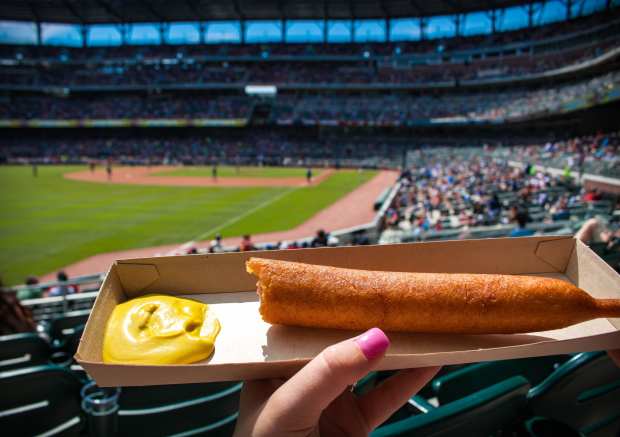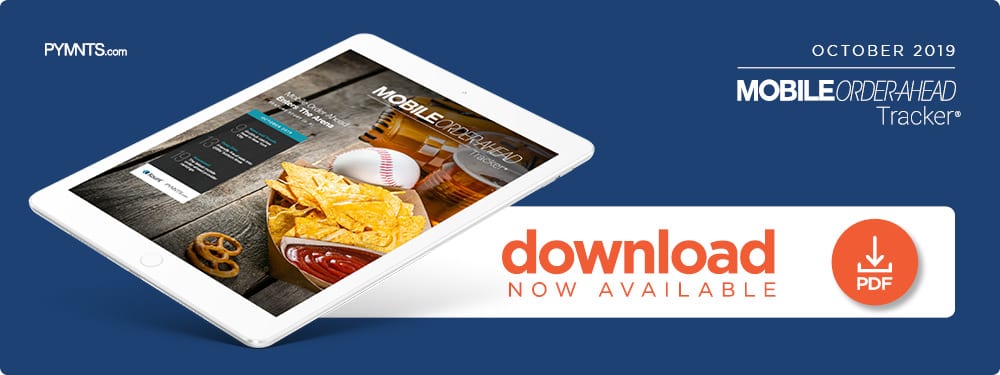How FanFood Brings Mobile Ordering To Sports And Concerts

Sports arenas are embracing mobile ordering to help consumers skip long concession lines, and avoid missing out on the action. Yet, offering mobile ordering isn’t without its security challenges. In this month’s Mobile Order-Ahead Tracker, PYMNTS talks with Dustin Hemesath, FanFood co-founder about how text-based authentication is helping keep transactions secure, while keeping fans in their seats.
 Mobile order-ahead was once solely the domain of QSRs and coffee chains, but it is now reaching other industries. Disney is offering mobile concession ordering at its California and Florida amusement parks, and several universities are introducing similar options at their on-campus dining halls. Such services are gaining ground at sports venues, too, with teams such as the Detroit Lions rolling out options that help fans skip long lines and avoid missing big plays.
Mobile order-ahead was once solely the domain of QSRs and coffee chains, but it is now reaching other industries. Disney is offering mobile concession ordering at its California and Florida amusement parks, and several universities are introducing similar options at their on-campus dining halls. Such services are gaining ground at sports venues, too, with teams such as the Detroit Lions rolling out options that help fans skip long lines and avoid missing big plays.
FanFood is one player exploring the expanding mobile order-ahead frontier, offering a mobile app that brings food ordering to sports, concert and other venues with concession stands. PYMNTS recently spoke to Dustin Hemesath, FanFood’s co-founder and national sales manager, about the company’s position in the industry and how it meets logistical and security challenges.
Hemesath founded FanFood in 2017 with Carson Goodale and William Anderson. The app was initially available at just six locations in California, Iowa and Texas, but now caters to more than 60 across the United States. Two of the larger venues it serves are the University of North Carolina’s Kenan Memorial Stadium and Avaya Stadium in San Jose, California, home of the Earthquakes Major League Soccer team.
“We are not currently in MLB, NFL or NBA facilities, but we are working from the bottom up … with lots of high schools, sports complexes and colleges,” Hemesath said.
How FanFood works
FanFood supplies venues and concession stands with mobile app-enabled tablets that can display incoming orders. The company assigns a manager to oversee operations at each site as well as food runners if the venue’s staff cannot handle delivery. Concession stands are responsible for receiving and fulfilling orders themselves.
FanFood collects several data points through customers’ purchases, including frequency, size and the venues from which they order. It also gathers demographic and locational data from users’ devices that it hopes to utilize for sophisticated analytics in the near future.
“We are super excited to analyze and see how [the data points] affect decision-making on using the mobile products versus standing and waiting in line at the concession stand, and if there’s any correlation there,” he said.
Meeting fans’ expectations
Sports arenas, concert venues and other locations have seen notable increases in the number of food orders placed through FanFood’s app.
“[Usually] people order only one time — if that — at a venue, and more than 40 percent of people last year abandoned [their orders] in the concession line,” Hemesath said. “But we’ve seen that for fans who download [the app] and use it, about 40 percent to 50 percent of them will come back during that same event and place a second order.”
FanFood has faced several challenges despite its steady growth. Hemesath said one of the company’s biggest hurdles has been handling concession stand ordering. Third-party order-ahead heavyweights such as Postmates and Grubhub have food pickup and delivery logistics down to a science, but FanFood is still building its infrastructure. Many of the platform’s clients are smaller arenas that did not previously offer mobile-order ahead services.
“We’re a software that we provide to these venues,” he explained. “But at the end of the day, if they can’t deliver on a great experience of having the product ready to go and enough staff to operate it, it looks bad on us and on the venue.”
Fraud challenges all mobile order-ahead apps, and FanFood is no exception. The app has thus far relied on its payment processor to keep customers’ data secure and flag potentially risky transactions, which the platform can verify in-house. It has also added two-factor authentication to its ordering process, requiring text-based authentication that Hemesath said is more reliable than password-based measures.
What’s next for FanFood?
FanFood’s footprint is currently small, but Hemesath and the company’s executive team have big plans. Chief among these is implementing third-party payment options, offering customers alternatives to entering their credit card information.
“We’re currently on Version 1.6 of the product,” he explained. “In the next month or so, we’ll be launching Version 2.0, which will have Apple Pay and Google in there.”
FanFood is looking into offering a rewards program. Hemesath said the loyalty offering extension is logical, as the first-time order discounts the app now provides have resulted in high return rates.
FanFood will likely face new challenges as it grows and competes with industry giants such as Postmates and Grubhub. Further innovations will be necessary if the app wants to continue making strides.